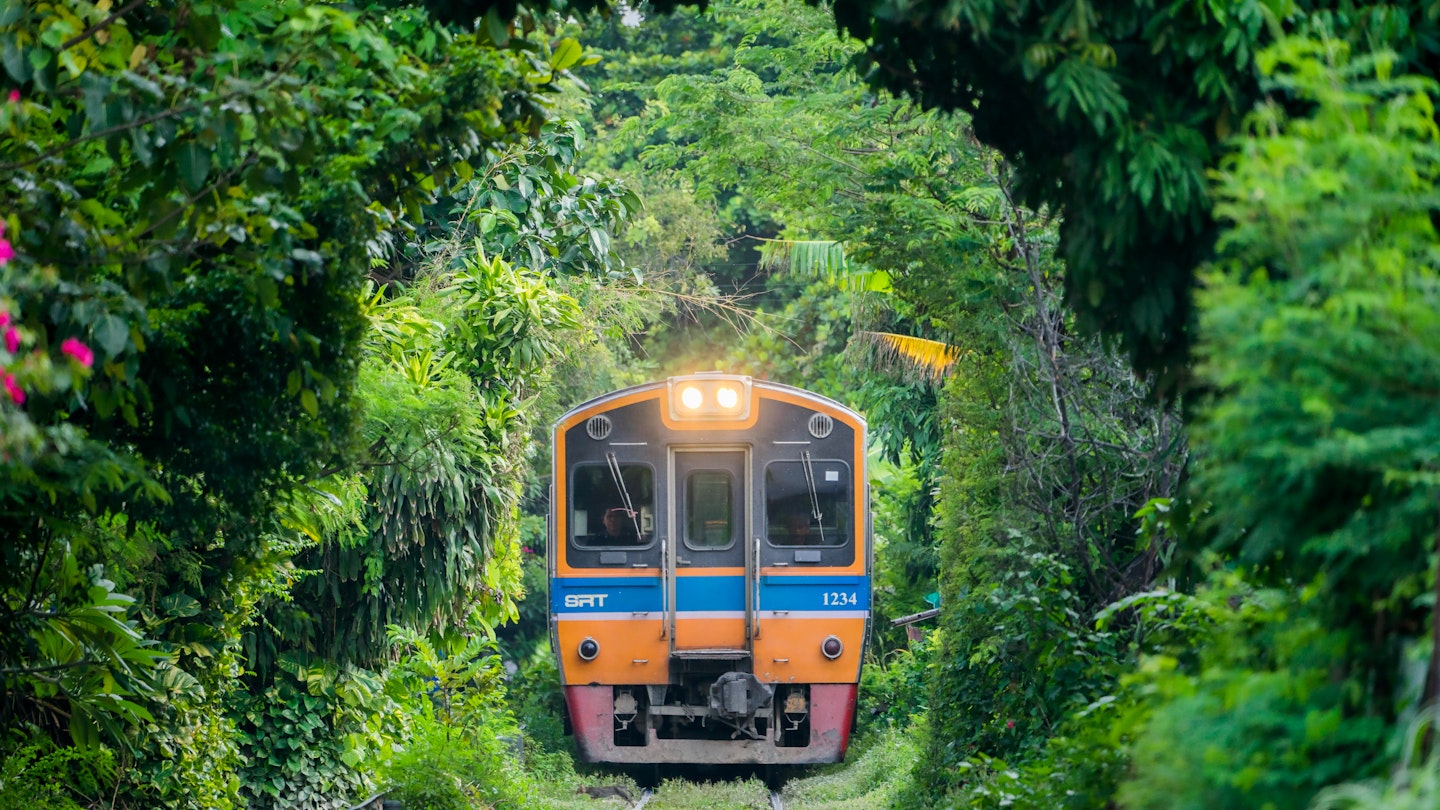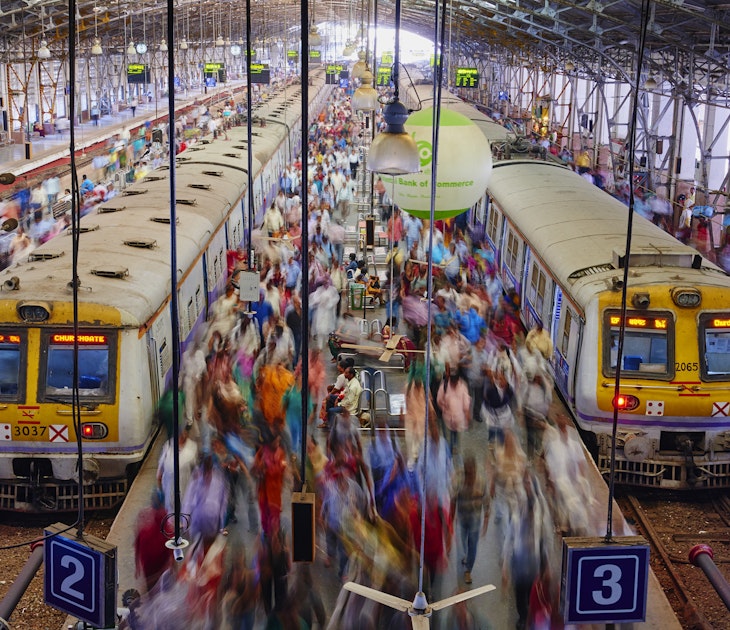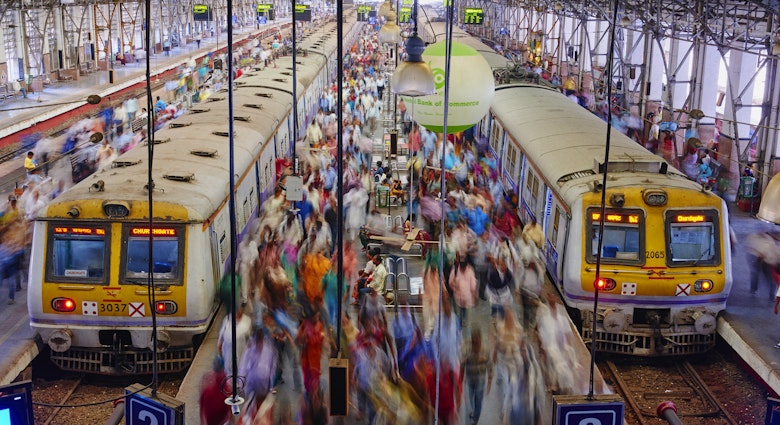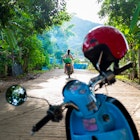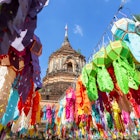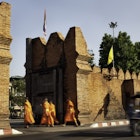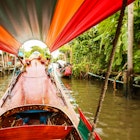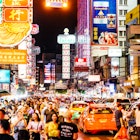One of the greatest thrills of travel is to be on the move, observing and absorbing a country as you go. By train, bus or motorbike, Thailand’s scenic journeys are to be savored.
Each adventure is packed with opportunities to sample the wares of hawkers, taste the local flavors from roadside food trucks and trade tips with fellow passengers. And don’t forget to smile through any unexpected hold-ups and occasional discomforts because they are part of what makes the journey so much more than the destination. Here are three highly recommended, highly memorable trips.
Mahachai Shortline train
Separate from the main train network, the Mahachai line from Wong Wian Yai station in Thonburi in the western part of Bangkok was originally constructed to transport produce from the ports of Samut Songkhram and Samut Sakhon to the markets in the city. It’s a working train, still used for transporting produce and people in and out of Bangkok.
Sitting among locals on hardback seats, with the breeze from open windows and overhead fans, while passing through the canals of the Bangkok suburbs and salt marshes along the Gulf of Thailand is an atmospheric trip that affords a glimpse of both the bustle and humdrum of everyday life.
Thailand's top 6 train journeys
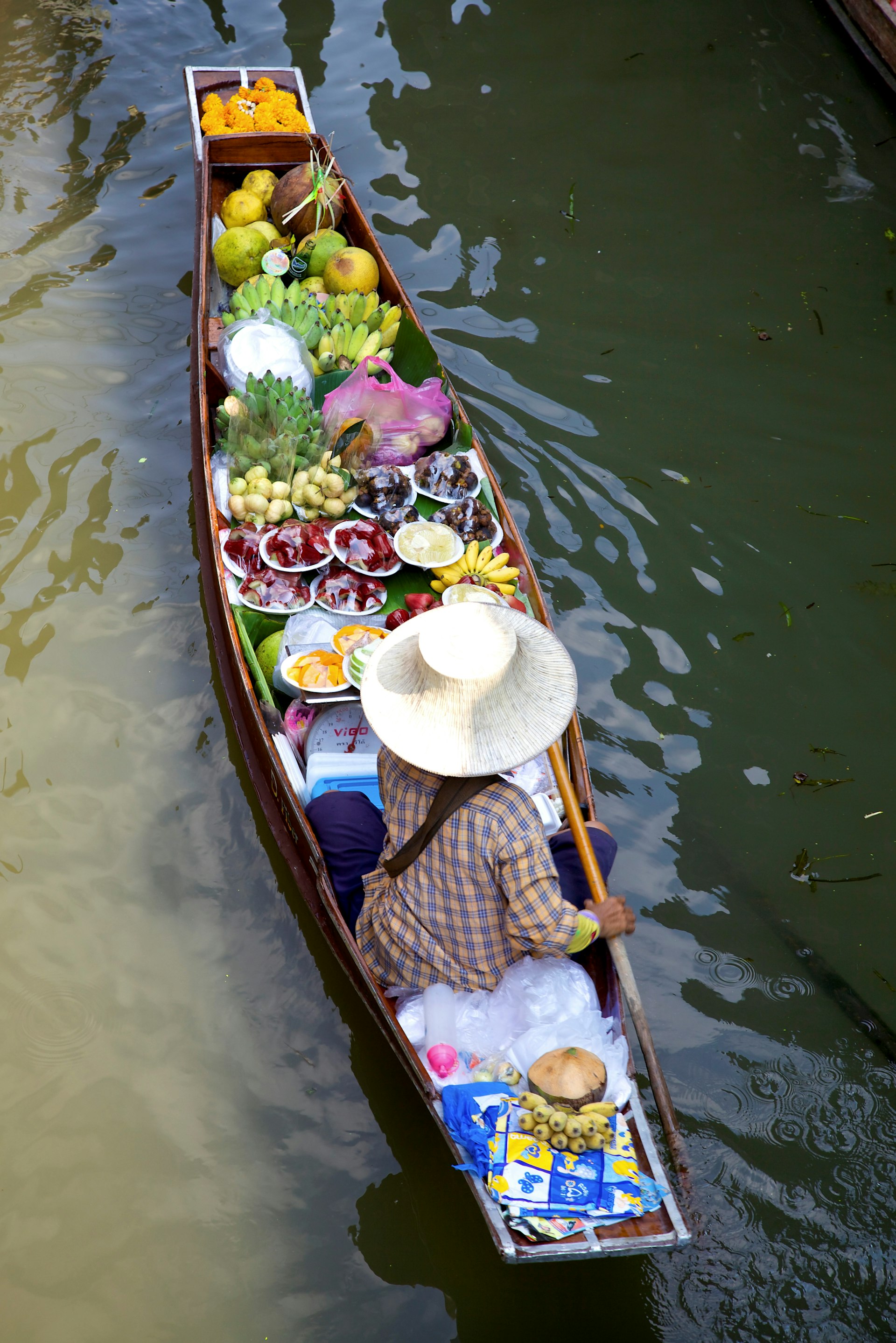
The first leg of the journey is the one-hour trip from Wong Wian Yai to the fishing port of Samut Sakhon. There the train terminates in the middle of a busy fresh produce market.
Just outside the market, catch a ten-minute ferry ride across Tha Chin river takes you to Ban Laem from where the train leaves for the second leg of the journey, the 90-minute ride to Samut Songkhram, another fishing port at the mouth of the Mae Khlong River. Again the train goes right into the market at Samut Songkhram, and here vendors make use of the space between the train tracks to lay out their wares, hastily moving it away as the train approaches. At weekends, the Amphawa Floating Market (open Friday, Saturday and Sunday evenings) is worth a visit.
You won't believe the views on these 9 iconic Thailand hikes
Make it happen
Trains run every hour from Wong Wian Yai to Samut Sakhon with a few daily connecting trains at Samut Songkhram. There is also a bus service between Samut Sakhon and Samut Songkhram and from Samut Songkhram to Bangkok’s south terminal.
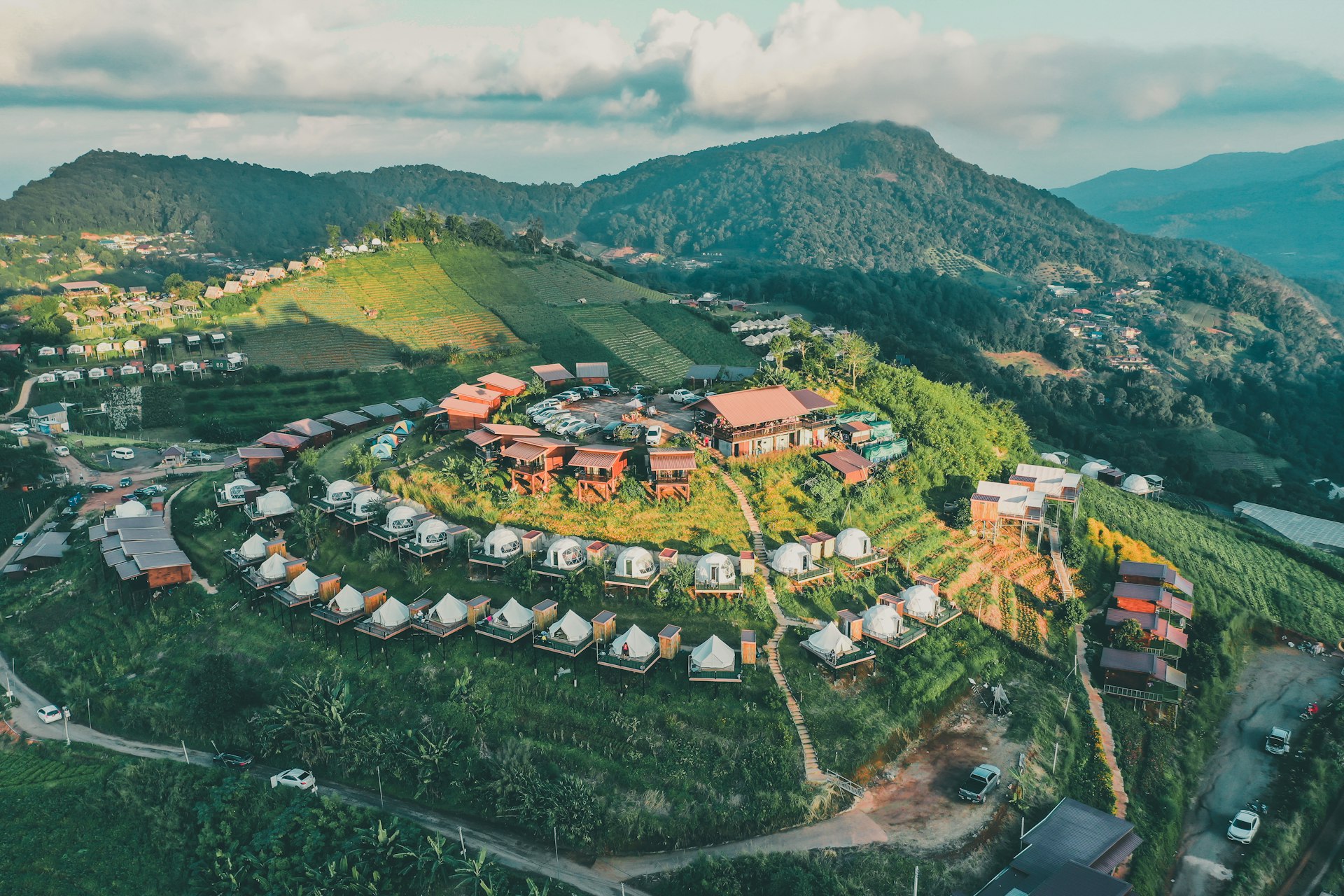
Mae Sa–Samoeng loop
The 100km Mae Sa-Samoeng loop climbs, dips and twists its way like a roller coaster through rugged mountains and forested peaks and can be done as a day trip by car, motorbike or scooter from Chiang Mai in northern Thailand. The expansive mountain landscape makes the journey itself the highlight of the trip, although there are plenty of worthy detours along the way.
From Chiang Mai, travel north along Rte 107 towards Mae Rim and then west on Rte 1096. Here the road becomes more rural, following the course of the Mae Sa River. Six kilometers past the turn-off for Mae Rim are the Nam Tok Mae Sa waterfalls in the Doi Suthep-Pui National Park, a picturesque spot that is popular with locals and a good place for a cooling dip.
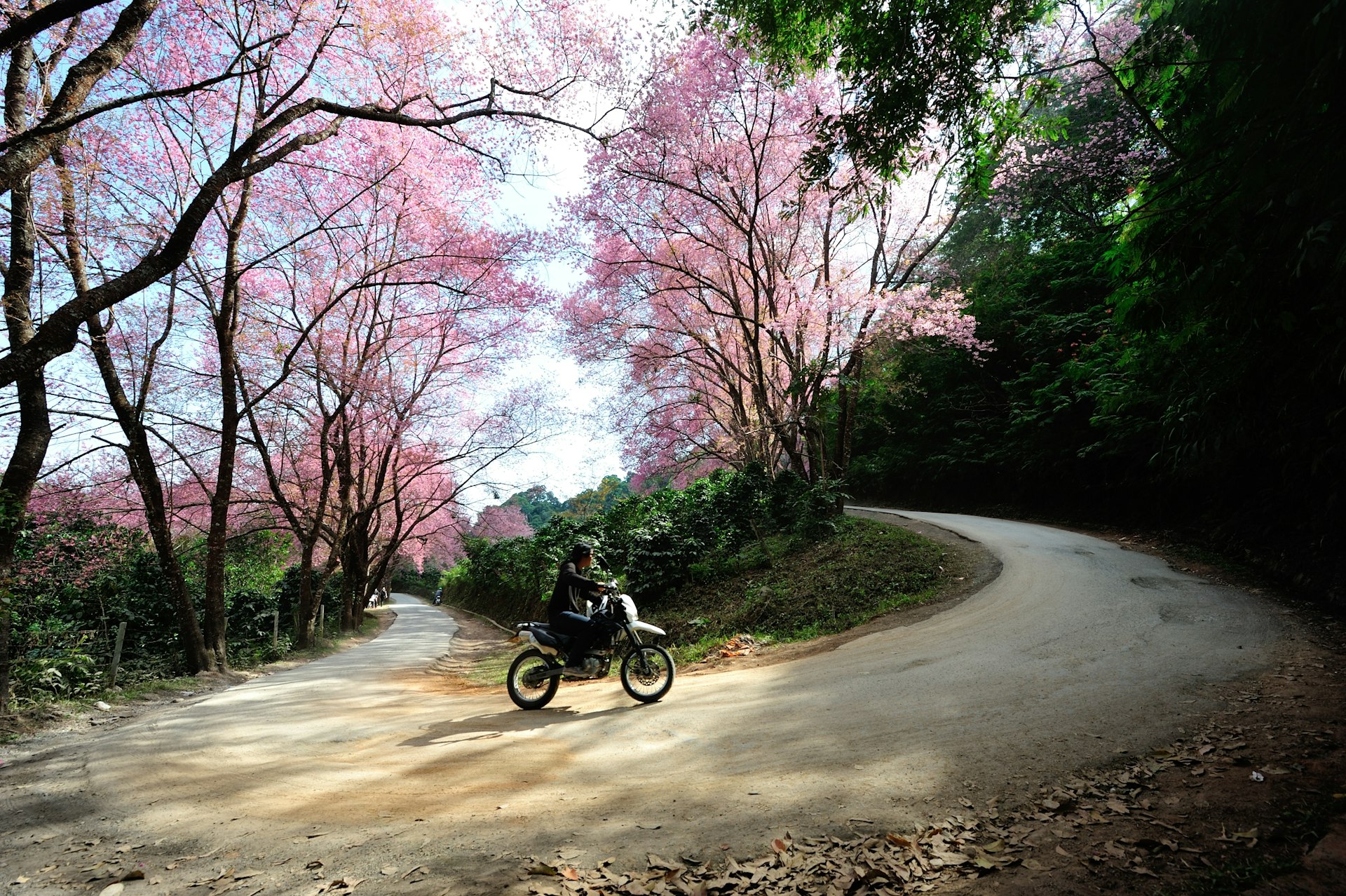
After enjoying the falls, keep going until you reach the Queen Sirikit Botanical Gardens, 12 km from the Mae Rim turn-off. Thailand’s first botanical gardens opened in 1993 – the glasshouse complex is not to be missed. From here, the road climbs up through the terraced fields of the Mae Sa valley; Mon Cham is a good place to stop for lunch and panoramic views.
The furthest point along the loop is the pretty village of Samoeng. From this point, follow Rte 1269, a winding road that descends from the hills, and then continue along Th Khlong Chonprathan (Canal Road) back to Chiang Mai.
A longer, more adventurous scenic motorbike trip is the Mae Hong Son loop, a 600km journey that takes a minimum of four days to complete.
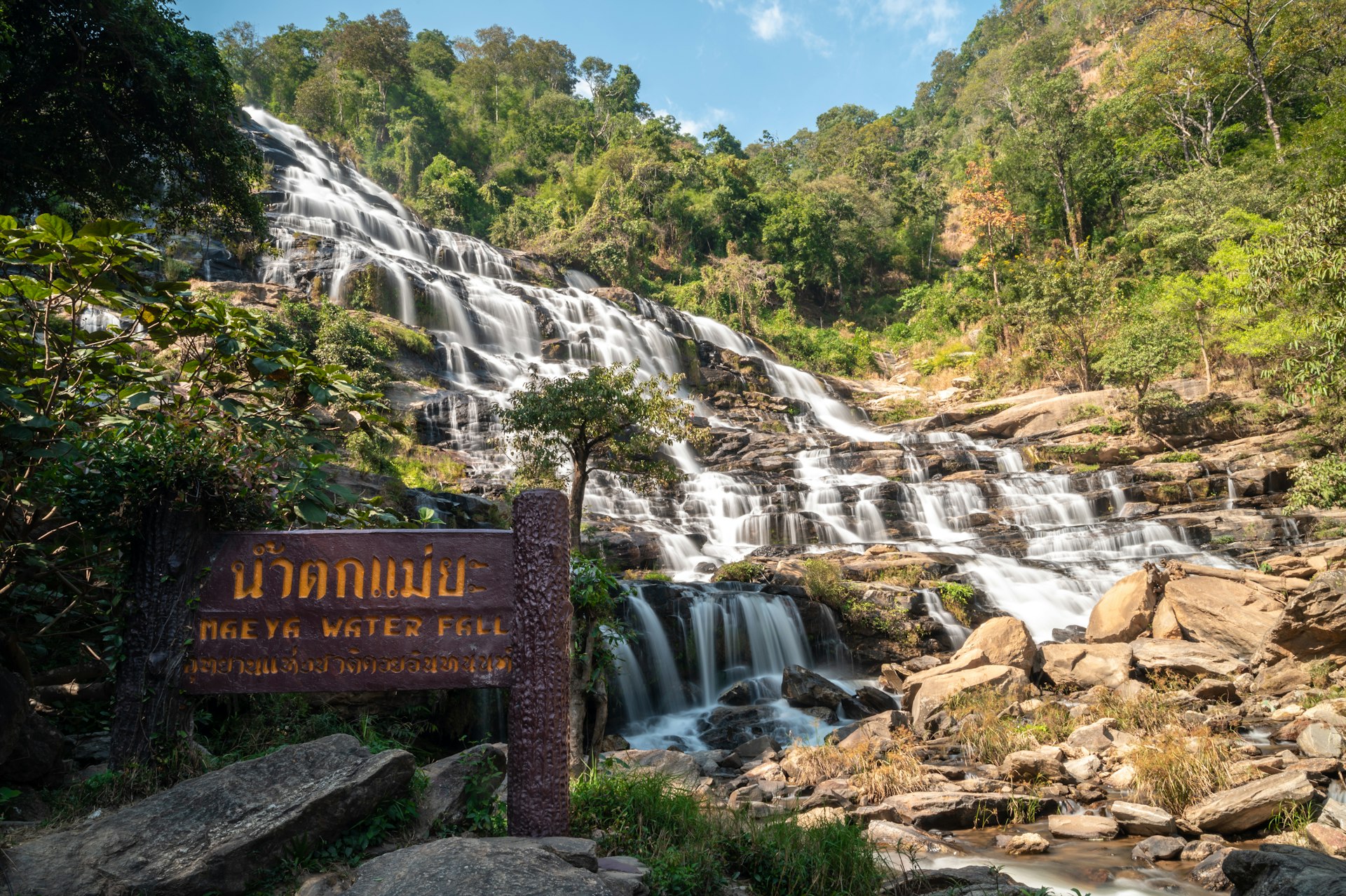
Make it happen
To travel the Ma Sa-Samoeng loop you will need to hire a car, motorbike or motor scooter since the route is not entirely covered by public transport. There are multiple vehicle hire outlets in Chiang Mai. Be careful to check the small print on your rental contract, including insurance cover, as well as your own travel insurance.
The 5 best day trips from Chiang Mai
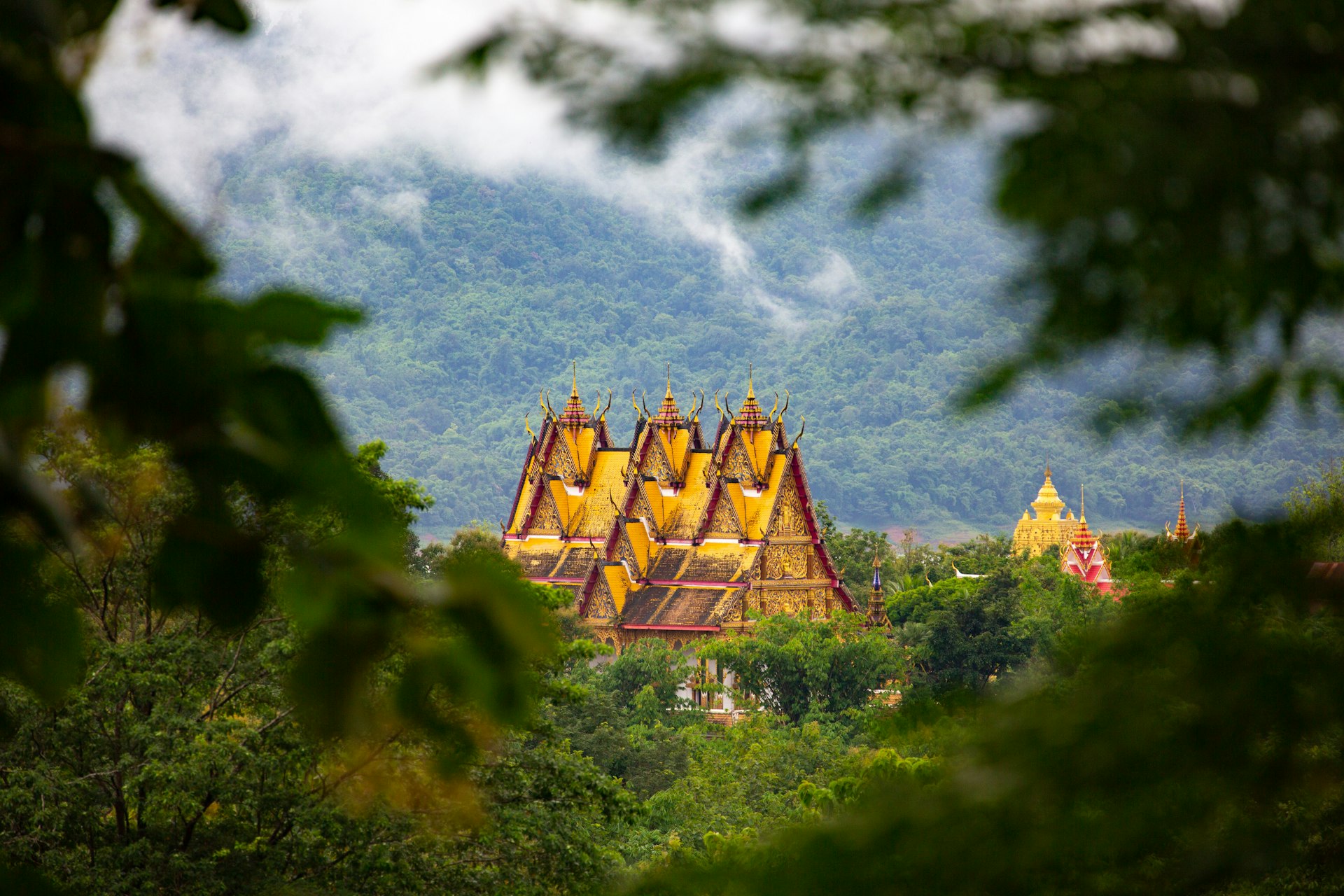
Bus ride from Kanchanaburi to Sangkhlaburi
Made famous as the setting for Pierre Boulle’s novel and David Lean’s 1957 film adaptation The Bridge over River Kwai, Kanchanaburi's WWII memorials and museums honor the conscripted laborers and POWs forced to build a railroad to Myanmar during Japanese wartime occupation.
Situated 130 km northwest of Bangkok, the town serves as a gateway to Thailand’s wild west and the 200km bus trip up to the sleepy town of Sangkhlaburi near the border with Myanmar rewards the adventurous with spectacular views. During the five-to-six-hour journey, the local tin-can bus slides its way between toothy green limestone mountains and passes through a teak reforestation project.
From Thong Pha Phum to Sangkhlaburi the road becomes quite rough, but it is also one of the most beautiful stretches of road in Thailand. Once you have bumped and wound your way there, this remote town overlooking the Khao Laem reservoir is an interesting destination with its mixed ethnic population of Burmese, Karen, Mon, Thai and Lao people, and a corresponding blend of cultures and languages. Extend the scenic journey a little further across the long rickety Mon bridge (now fully repaired after storm damage in 2013) to the village of Wang Kha.
Make it happen
The bus station in Kanchanaburi is at the southern end of the town on Th Saengchuto. From here, there are hourly ordinary and air-conditioned buses to Sangkhlaburi. The air-conditioned bus takes about four hours and the ordinary bus between five and six hours. There are also frequent buses from the Kanchanburi bus station to Bangkok (three hours).
You might also like:
The quickest, easiest and most affordable ways to get around in Thailand
You won't believe the views on these 9 iconic Thailand hikes
The 15 most amazing places to visit in Thailand
